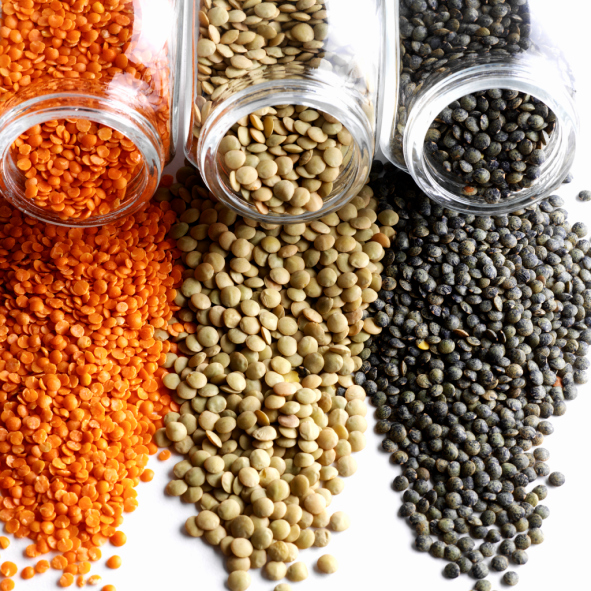Beans Health Benefits: Eat Dry Beans, Peas, and Lentils for Heart Health
 Dried beans, peas, and lentils include kidney beans, navy beans, chickpeas, Great Northern beans, black-eyed peas, split peas, and lima beans.
Dried beans, peas, and lentils include kidney beans, navy beans, chickpeas, Great Northern beans, black-eyed peas, split peas, and lima beans.
Dry beans, peas and lentils are a very economical option for adding protein and nutrients to your diet with a 1-pound costing an average of $0.15 per serving for dry beans and between $0.35 to $0.50 per serving depending on brand for canned beans.
Beans Health Benefits: Dry beans, peas, and lentils are highly nutritious
— Contain almost twice the protein of whole grains and all nine essential amino acids
— Provide both soluble and insoluble fiber
— Low in sodium. If prepared without added salt contain they contain almost no sodium. Canned options are higher in sodium. Select “low sodium” or “no added salt” options. Draining and rinsing canned beans, peas and lentils reduces sodium content by 41%.
— Contain almost no fat. Fat content depends on what is added during preparation.
— A plant source of iron. Plant iron sources are a little harder for the body to absorb. To boost iron absorption, combine with foods contains vitamin C.
— Rich source of magnesium, zinc, and potassium.
— Gluten-free
Dry beans, peas, and lentils provide important health benefits
— Beans are high in fiber increasing digestion time and feelings of satiety to promote weight loss
— High fiber content combined with a low glycemic index promotes improved blood glucose levels.
— Diets containing beans are connected to a significant reduction in LDL cholesterol.
— Fiber, folate, and low saturated fat content of beans is beneficial for heart health.
— High bean intake may be linked to reduced cancer risk.
— High fiber content reduces constipation.
How to add more dry beans, peas and lentils to daily diet
Unfortunately, dry beans, peas, and lentils can come with an undesirable side effect: gas. You can prevent this problem by rinsing and draining canned options during preparation. When preparing dry varieties rinse after soaking and prepare in fresh water. Add to your diet gradually. Start with a small serving once a week, increase to twice a week, and follow the same pattern until you consume daily or almost daily. Increase your water intake.
Dry beans, peas, and lentils are considered a vegetable and a protein and can be utilized as either food group when preparing meals. Note they cannot be counted in both groups at the same time.
A one-fourth cup serving counts as 1 ounce of protein and a ½ cup serving counts as a ½ cup of vegetables. A ½ cup serving provides approximately 120 calories nutrient-rich calories.
Beans are often easiest to increase in the diet by adding to other dishes.
- Salads
- Pastas
- Rice
- Casseroles
- Stews
- Soups
- Dips
- Burritos
- Tacos
- Sandwich spreads (ie hummus)
You can store dry beans in a well-sealed container for up to one year. Leftover beans remain good refrigerated for three to four days. You may also freeze cooked beans.
Increasing your intake of dry beans, peas, and lentils is just one step towards lowering cholesterol. For further guidance, access the free e-course How to Lower Cholesterol in 8 Simple Steps at http://lowercholesterolwithlisa.com.
All the best,
Lisa Nelson RD
Health Pro for HealthCentral



